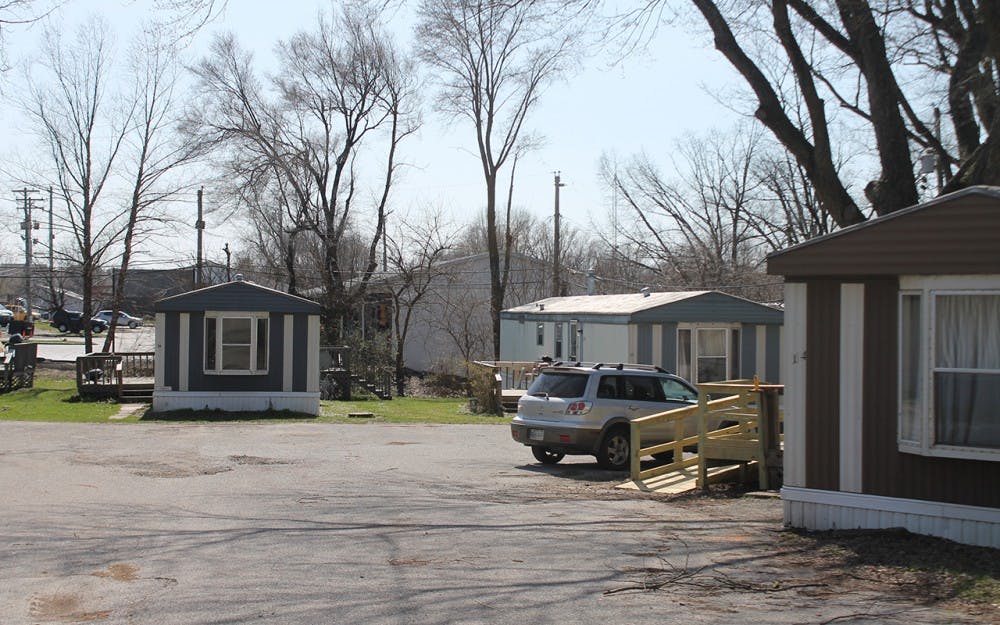This is the third installment of a weekly five-part series profiling each of the seven areas proposed for annexation of Bloomington. This week covers areas three, four and five, the three sections within city limits.
No one in Mayor John Hamilton’s office really knows why three areas within the limits of Bloomington are not official parts of the city, but people living in the middle of the city may soon become official residents.
Hamilton proposed the addition of seven areas in and around Bloomington last month, a total of 10,000 acres and 15,000 people. These seven areas, which are currently unincorporated, would be official parts of the city. City services do not currently extend to these areas, though Bloomington is the closest municipality to the people in the proposed annexation areas. If approved, annexation would take effect Jan. 1, 2020.
Hamilton said at his public proposal Feb. 3 that the annexation “will allow all those households and businesses in the community to be a part of the same future of Bloomington.”
These three areas are collectively called the “islands” in the annexation proposal. They are located at the block of Evergreen Drive, North Johnson Avenue, West Third Street and North Kimble Drive and areas around the block; land on both sides of South Cory Lane; and land from the corner of Adams and Allen streets to Bloomfield Road, down to the corner of Weimer and Wapehani roads.
Combined, the three areas would bring 1,709 new residents, 435.08 acres of land and 3.8 miles of county roads to the city.
These areas include Bloomington and Perry townships. Everyone in the annexed areas will see property tax increases. Both Bloomington and Perry township rates would rise to about $2.03 for every $100 of value, with 2016 tax rates.
Annexing all three islands will cost between $124,342 and $155,689 in the first year. This is significantly less than the other four areas, which could reach up to more than $19 million for one area.
Though Bloomington has been annexing areas throughout its history, the land surrounding the three areas was annexed from 1990 to 2003. Why exactly these areas were never included is a mystery to even those proposing annexation.
“We don’t really know why they weren’t annexed before,” city spokesperson Mary Catherine Carmichael said. “Most of the people here now weren’t around when that was happening.”
Many residents of these areas live in low income housing. Some of them have expressed disinterest in being official parts of the city despite living in the middle of it.
“I can burn, the taxes aren’t as high, and I can live,” area four resident Connie Franklin said.
Franklin, 63, said she does not see any benefit from being annexed when all services are there for her to use, including a city transit bus stop near her home. This is a common criticism of all residents of the annexation areas.
“I just prefer to not live in city limits,” she said.
If you are not sure whether you live in the proposed annexation areas, look at bloomington.in.gov/annex to search by name, address or parcel number.
——————————————————————————————————————
Public meetings and proposed scheduling for the rest of the annexation process
March 20-21, 24: Public information meetings, 6-8 p.m. in City Hall
March 22-23, 25: Public information meetings, 11 a.m.-1 p.m. in City Hall
March 31: Notice of public hearings to be publicized and mailed to landowners
May 31: Public hearings on proposed annexations
June 28: Consider adoption of annexation ordinances and any fiscal plan updates
July 7: Notice of adoption of annexation to be publicized and mailed to landowners outlining the remonstrance process, if approved on June 28. Landowners in the annexation areas will have 90 days from this day to file a petition against the annexation.
Oct. 6: Annexation ordinances could be eligible for recording and filing
Jan. 1, 2020: Annexation takes effect
Other parts in this series:
Area 1 Annexation area one residents displeased with idea
Area 2 Annexation area two citizens criticize speed, lack of clarity of project






